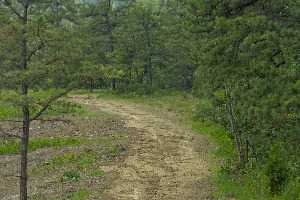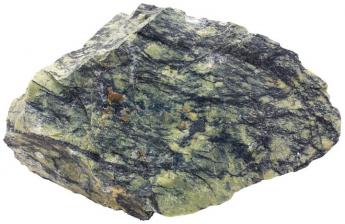Related Topics
Historical Preservation
The 20% federal tax credit for historic preservation is said to have been the special pet of Senator Lugar of Indiana. Much of the recent transformation of Philadelphia's downtown is attributed to this incentive.
Architecture in Philadelphia
Originating in a limitless forest, wooden structures became a "Red City" of brick after a few fires. Then a succession of gifted architects shaped the city as Greek Revival, then French. Modern architecture now responds as much to population sociology as artistic genius. Take a look at the current "green building" movement.

Customs, Culture and Traditions (2)
.
Chester County, Pennsylvania
 Chester was an original county of Pennsylvania, one of the largest until Dauphin, Lancaster and Delaware counties were split off. Because the boundaries mainly did not follow rivers or other natural dividers, translating verbal boundaries into actual lines was highly contentious.
Chester was an original county of Pennsylvania, one of the largest until Dauphin, Lancaster and Delaware counties were split off. Because the boundaries mainly did not follow rivers or other natural dividers, translating verbal boundaries into actual lines was highly contentious.
Serpentine Rock From Serpentine Barrens

|
|
Barrens
|
Even in pre-revolutionary Colonial days, it was recognized that patchy areas of Chester and Lancaster counties were covered with twenty-foot stunted evergreens instead of two-hundred-foot oaks. They were "barrens", resembling the pine barrens of central New Jersey. In time, these barrens were particularized as Serpentine barrens, out of a recognition that this stunting of vegetation was somehow associated with greenish stone in the bedrock. So, the serpentine barrens in time became serpentine rock quarries, but they seem somehow less barren now that surrounding deciduous forests have been cut down to make nice farmland. The greenish stone was a novelty, especially because it was usually (but not invariably) soft sandstone and easy to quarry, and the bedrock was only an inch or so under the topsoil, or even appeared on the ground surface as outcropping. These qualities made serpentine a popular building material, but in retrospect, it should have been more apparent that sandstone crumbles easily, and what can stunt tree growth probably wasn't very good for you.

|
|
Serpentine Rock
|
Well, the green color comes from chromium salts. Sometimes the greenish color is diffused throughout the volcanic rock, but more commonly concentrated in green veins "snaking" through sandstone. Diffuse is better for building because the greenish intrusions create fracture lines in response to acid rain. In modern times, we mostly think of chromium as imparting a shiny look to plated auto bumpers. Some automaker was once quoted as saying he sold more cars using $10 worth of chrome than with $100 worth of engineering. That's metallic chrome because central to the definition of a metal is that it looks shiny. Even high school chemistry scholars can tell you it is a "salt" of chromium, the chromic ion, which imparts a greenish tinge when dissolved in water. So, chromic salts dissolved in the local water are what dwarf the vegetation of a serpentine barren, not chromate (which is yellow), and not metallic chromium (as in auto trim). So, although one might suppose otherwise, a few years ago when local builders started up modern quarries of the serpentine rock, the environmentalists of Chester County were up in arms. Demonstrations were held, editorials are written, politicians hectored. The Serpentine Barrens was a local treasure, requiring legal protection; protective ordinances were demanded.

|
|
Building construction with Serpentine Rock
|
Although building construction with the serpentine rock had a considerable flurry in the late 19th Century, the crumbly nature of sandstone caused the disappearance of all but a few examples. A building in boathouse row on the Schuylkill, a pre-revolutionary house on the Brandywine battlefield, College Hall on the campus of the University of Pennsylvania, pretty much comprise the notable surviving examples. But in a certain way, the Serpentine buildings do sort of define Victorian Philadelphia.
California is not within the intended scope of Philadelphia Reflections. However, it probably should be mentioned that Serpentinite is the official California rock, as would be natural for a substance which composes about 2000 square miles of its bedrock. It's green in color, but has high magnesium content, and seems to originate with the grinding of tectonic plates as they throw up mountain ranges, with attendant earthquakes. California also has serpentine barrens, but local geologists blame that harmful vegetation effect on magnesium competing with soil calcium (rather than the less notable chromic ions in West Coast serpentine). We're getting into some pretty fine distinctions, here. Pennsylvanians will probably be content to know we found ours first, that it had a flurry in Victorian architecture, and it's just a bit quaint. And, that it doesn't pose a significant risk for asbestos poisoning. A California geologist, in defending their state rock honor, recently proclaimed there was a greater statistical risk of dying from their state animal (the grizzly bear) than from their state rock.
REFERENCES
| The Pine Barrens: John McPhee: ISBN-13: 978-0374514426 |
Amazon |
Originally published: Tuesday, June 29, 2010; most-recently modified: Wednesday, June 05, 2019
| Posted by: CJ Martello | Oct 19, 2015 12:51 AM |
| Posted by: Gpop | Aug 6, 2015 1:05 PM |
| Posted by: Rhea | Mar 12, 2014 10:09 PM |
| Posted by: corypenman | Jun 21, 2013 10:15 AM |
| Posted by: alan | Mar 22, 2013 5:08 PM |
| Posted by: David | Jul 24, 2012 1:15 PM |
| Posted by: J.Gordon | Aug 9, 2010 5:13 PM |
| Posted by: bzpaul | Jul 7, 2010 12:32 PM |
| Posted by: J.Gordon | Jun 30, 2010 11:02 PM |

 Chester was an original county of Pennsylvania, one of the largest until Dauphin, Lancaster and Delaware counties were split off. Because the boundaries mainly did not follow rivers or other natural dividers, translating verbal boundaries into actual lines was highly contentious.
Chester was an original county of Pennsylvania, one of the largest until Dauphin, Lancaster and Delaware counties were split off. Because the boundaries mainly did not follow rivers or other natural dividers, translating verbal boundaries into actual lines was highly contentious.

